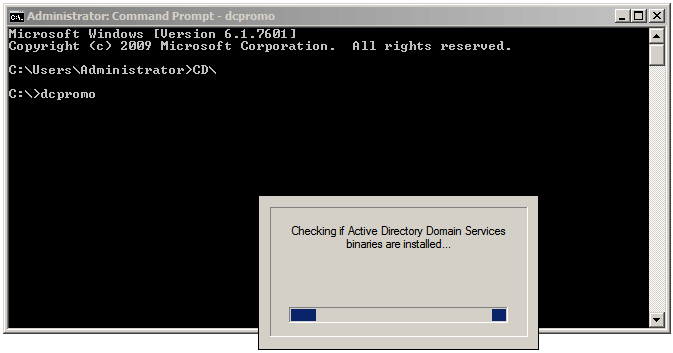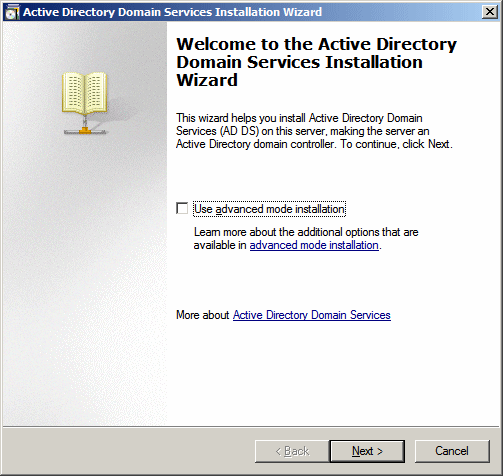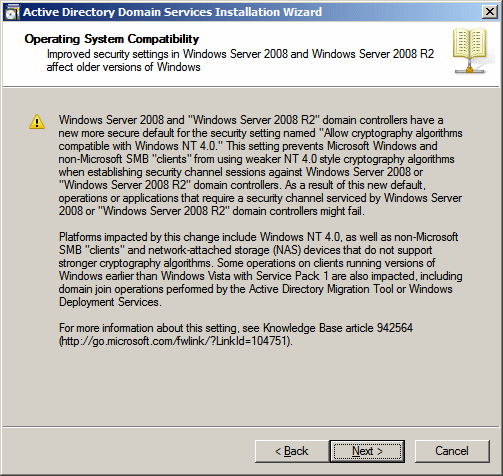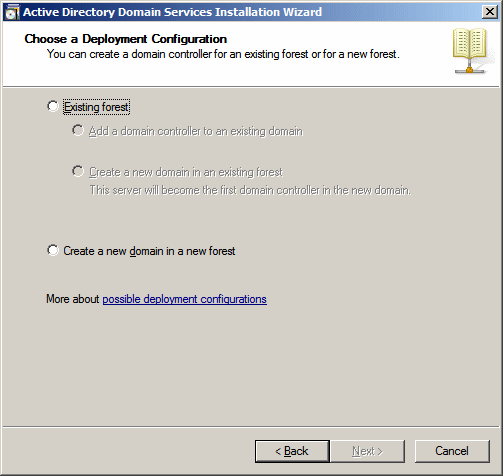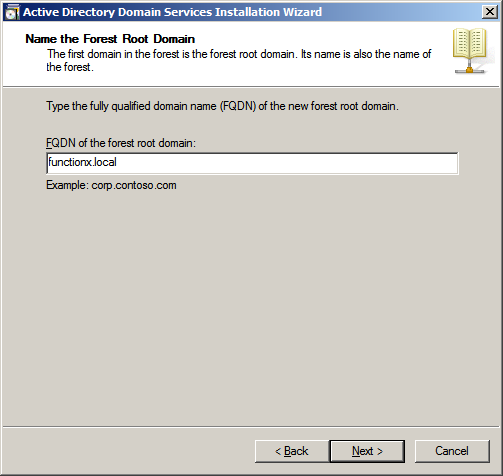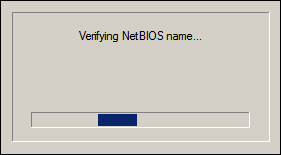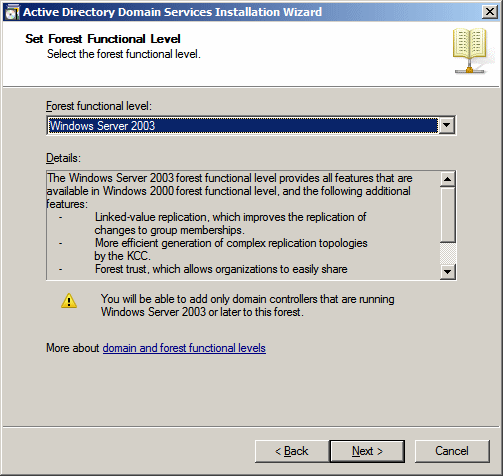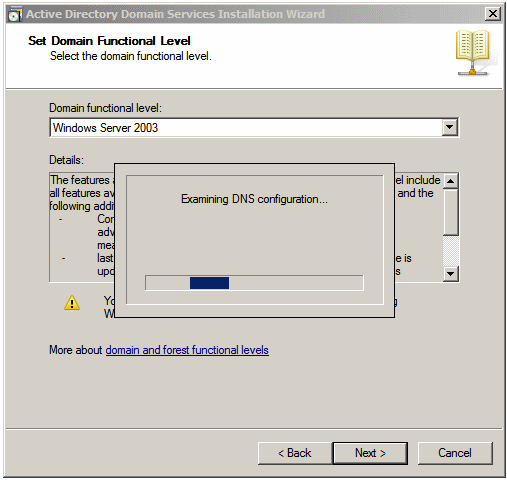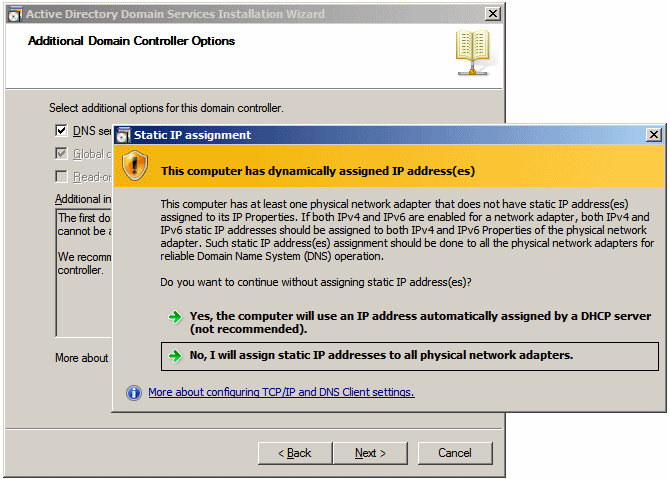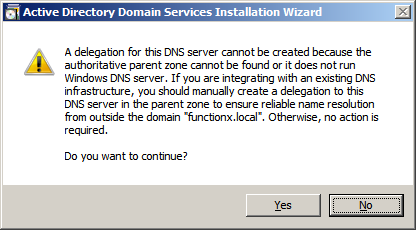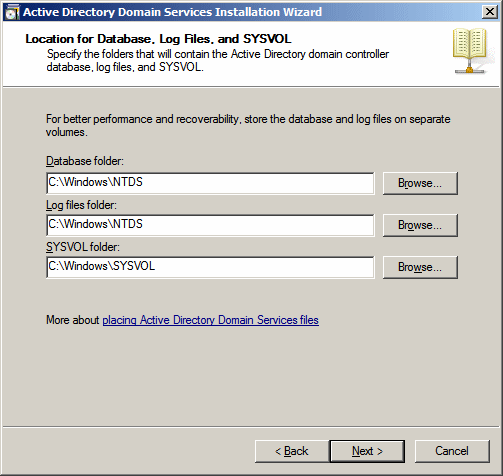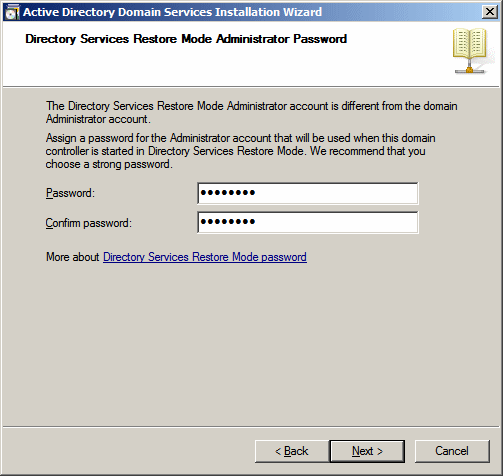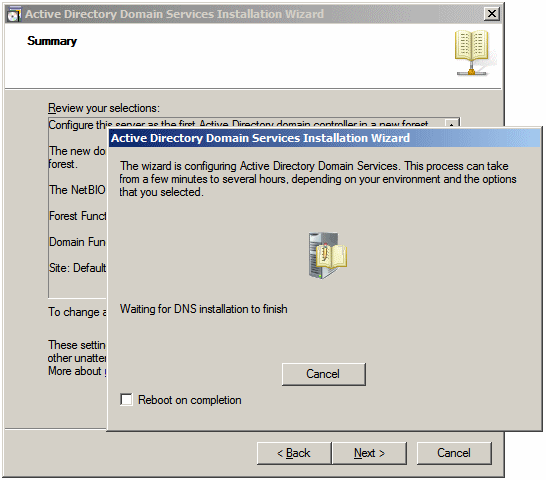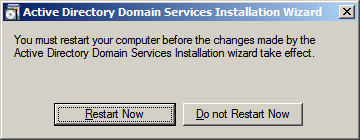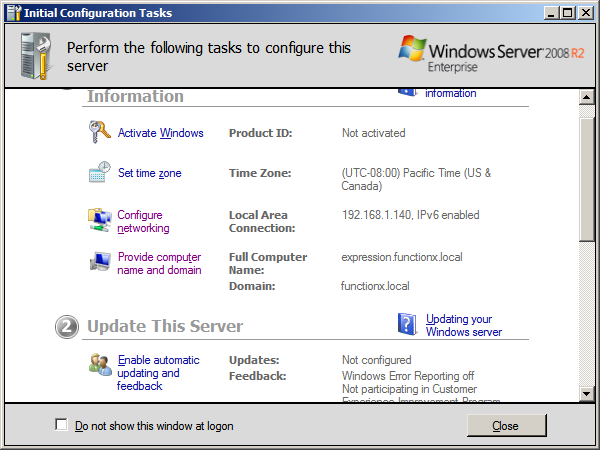| A computer network consists of two or more computers intended to share resources: |
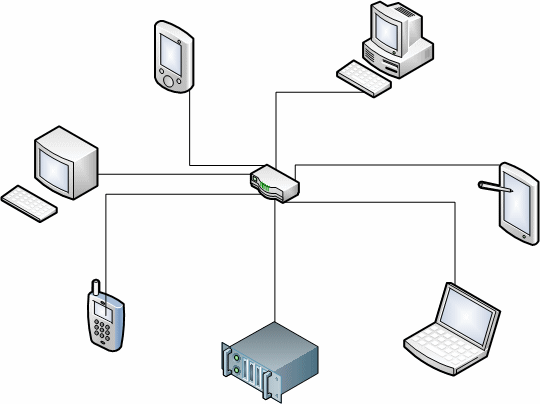
A client/server network is a system where one or more computers called clients connect to a central computer named a server to share or use resources. Each client computer must use an operating system that allows it to be identified to participate in the network.
A computer network is referred to as client/server if (at least) one of the computers is used to “serve” other computers referred to as “clients”. Besides the computers, other types of devices can be part of the network:

In a client/server environment, each computer still holds (or can still hold) its (or some) resources and files. Other computers can also access the resources stored in a computer, as in a peer-to-peer scenario. One of the particularities of a client/server network is that the files and resources are centralized. This means that a computer, the server, can hold them and other computers can access them. Since the server is always ON, the client machines can access the files and resources without caring whether a certain computer is ON.
One of the consequences of a client/server network is that, if the server is turned OFF, its resources and sometimes most of the resources on the network are not available. In fact, one way to set up a client/server network is to have more than one server. In this case, each server can play a different role.
Another big advantage of a client/server network is that security is created, managed, and can highly get enforced. To access the network, a person, called a user must provide some credentials, such as a username and a password. If the credentials are not valid, the user is prevented from accessing the network.
The client/server type of network also provides many other advantages such as centralized backup, Intranet capability, Internet monitoring, etc. In a small network, all these services can be handled by one server:
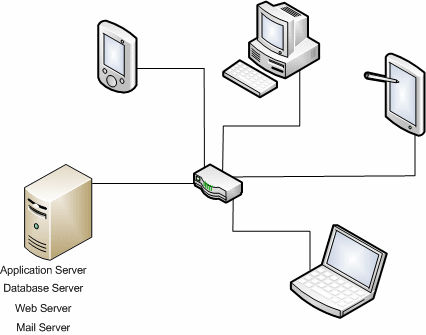
In a medium to large network, there can be many servers with each performing a different task:
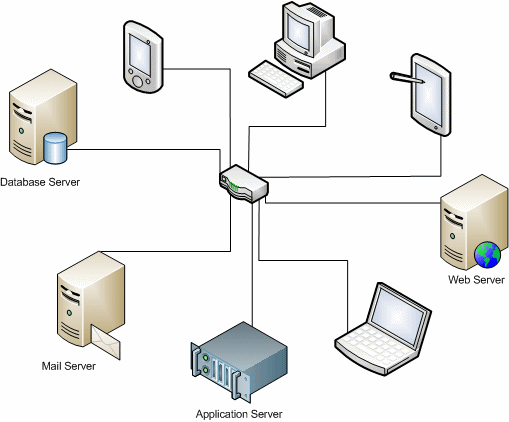
In these series of lessons, we will build a Microsoft Windows network (I love Linux and Apple but at the time of this writing, I want to make lessons simple by dealing with only a simple network; normally, you can connect a Linux workstation, such as Novell SUSE Linux, to a Microsoft Windows network; this is extremely easy to do; based on my experience, there is nothing significant to do; once the network is setup and you connect the Linux workstation to the network, the Linux computer will find everything on the network; the Linux OS is so intelligent it would take care of everything).
If you purchase new computers in a store or from a web store, the computers will most likely have an operating system. At the time of this writing, most computers sold in stores have Microsoft Windows 7 Home Premium. Some other computers, such as netbooks, run Microsoft Windows 7 Starter.
For our network, we will use Microsoft Windows 7 Professional, Ultimate, or Enterprise. Microsoft Windows 7 Home Premium cannot join a domain-based network (but it can participate in a peer-to-peer network). If the computer(s) you are planning to use for your network doesn’t (don’t) have the Microsoft Windows 7 Professional, Microsoft Windows 7 Ultimate, or Microsoft Windows 7 Enterprise operating system, you must upgrade it. Among the ways you can acquire the upgrade, you can purchase it from a computer store or a web store. Another option is to get an MSDN subscription.
If you have built your own computer(s) or you acquired (a) “barebone” computer(s), once it’s ready with the necessary hardware parts, you must acquire and install the operating system.
| New Client Operating System Installation |
| |
A new installation of operating system (OS) is suitable if:
- You have a computer with no operating system at all
- You have a computer with an operating system but you want to overwrite it
- You have a computer with an operating system but it doesn’t support an upgrade to the OS you want to use
To perform a new installation:
- Turn the computer on. If you are using a computer without an operating system, if you receive a message stating “Missing Operating System”, or “Strike F1 to retry boot, F2 for setup utility”, don’t worry about it at this time
- On the (DVD) drive, push the buton to open the drive
- Put the DVD that has the operating system in the drive
- Restart the computer
- A few seconds after the computer has started, a message may (should) ask you to press any key to boot from CD or DVD (to install the operating system) (the message may display “Press any key to boot from CD or DVD” or something like that). Press any key to continue. Otherwise:The installation will stall copying files.
- If a message of pressing any key to install the operating system doesn’t come up, you should restart the computer. Then, as soon as the black screen of the computer restarting appears, press a key such as F2 or F8 (this depends on your computer or the manufacturer) to access the BIOS. Access the Boot Sequence and check the list. If the (DVD) drive is not on top and if the instructions allow it, move the (DVD) drive to the top of the sequence. If you cannot move the (DVD) drive to the top, then disable the drives, such as the hard drive, that come above it. In some cases, you can select the drive and press the Space bar to remove the check mark from the selected item. In this case, make sure that only the (DVD) drive has a check mark next to it. After making changes in the BIOS to make the computer boot from the (DVD) drive, save and exit the BIOS. Then restart the computer and follow the instructions on the screen to install the operating system
- If a message of installation still doesn’t come up, make sure the (DVD) drive is installed appropriately (if you have access to the Internet, you can also check the following site: http://www.bootdisk.com/ for a boot disks and options)
- If the computer still doesn’t boot from the DVD and if you have access to the Internet, check the Support site from Microsoft: http://support.microsoft.com
-
The next screen will ask you to select the language. Select one:
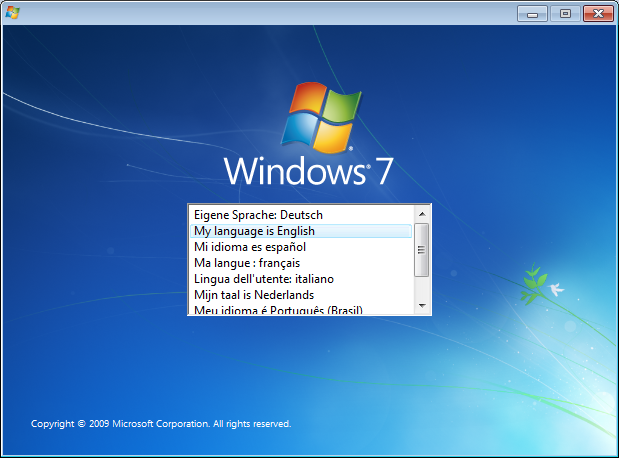
- The next screen presents the language you selected:
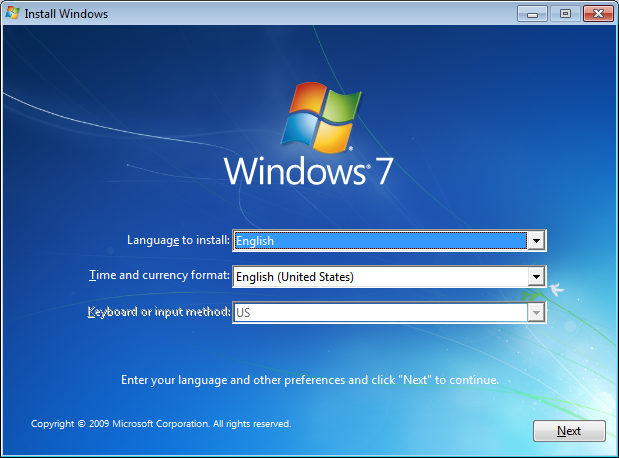
Click Next
- The next screen indicates that the installation is ready:
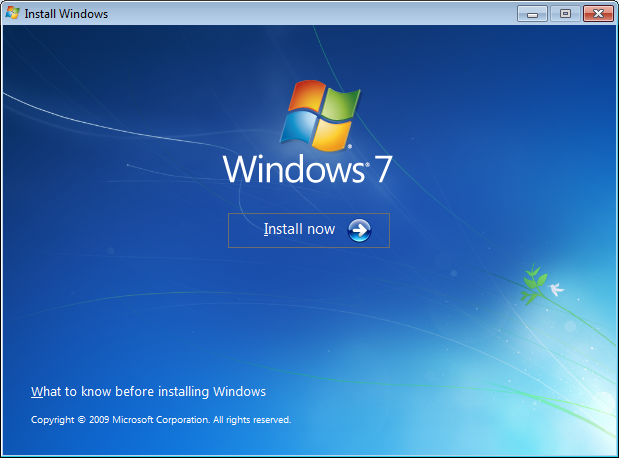
Click Install Now
- The next screen allows you to select the version (32 bits or 64 bits):
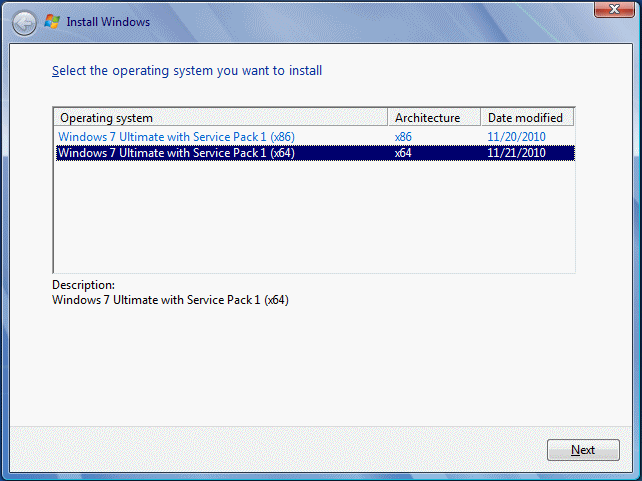
- Make your selection and click Next
- The next screen shows the license agreement:
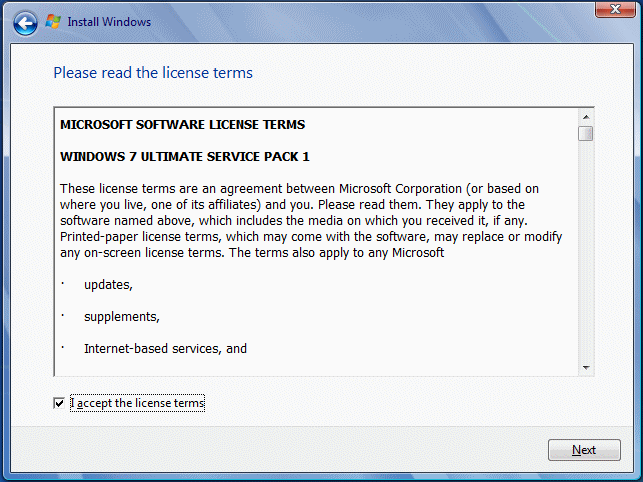
Read it. If you agree, click “I accept the license terms”
- Click Next
- If the computer had an operating system already, the next screen allows you to upgrade or perform a new installtion:
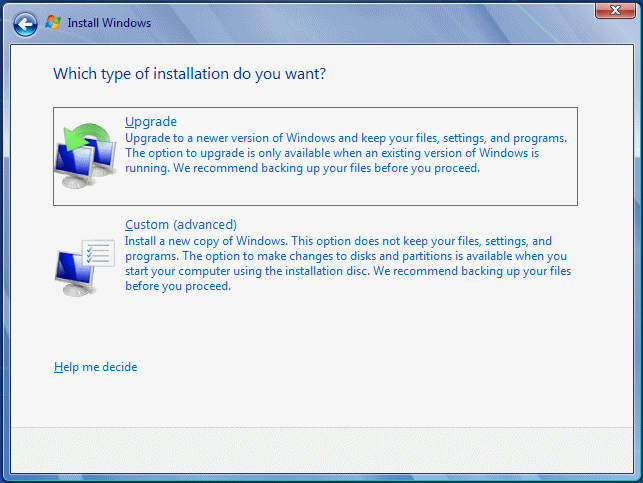
Click Custom (advanced)
- The next screen allows you to specify the partition where to install the operating system.
After making your selection, click Next.
The installation will start copying files. This may take a while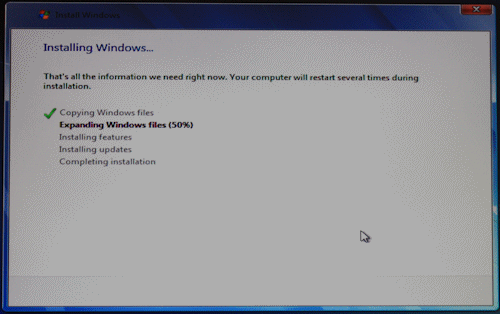
- When file copying is over, the computer would reboot.
When the computer comes back on, a screen will ask you to provide a user name. Type it and press Tab.
You may be asked for a Product Key, which you must enter. After typing the product key, click Next
- You must also provide a name for the computer. Accept the default given name or change it
- Click Next
- The next screen asks you to optionally provide password. You can skip it for now (On a small network, O personnally don#039;t provide that password). Otherwise, type the password, press Tab, and type it again.
Click Next
- The next screen asks you to protect your computer:

Click the first option
- The next screen asks you to specify your Time Zone, the date and the time
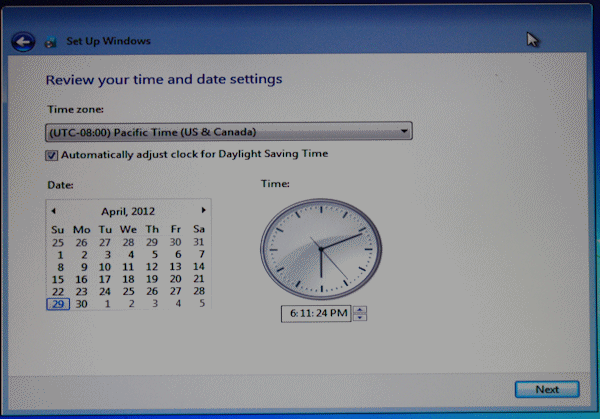
- After making your selections, click Next.
You should receive a welcome message that leads to the computer’s desktop
| Upgrading the Client Operating System |
| |
At the time of this writing, most computers sold in stores run Microsoft Windows 7 Home Premium. In fact, if you just go a computer store and decide to purchase computers for your network, that’s the operating system the computer may have.
If you already have one (or more) computer(s) that you plan to use as workstation(s), it (they) may be running a previous operating system such as Microsoft Windows XP or Windows Vista. If you purchased a regular computer in a store, it may run Microsoft Windows 7 Home Premium.
For our network, we will use Microsoft Windows 7 Professional, Ultimate, or Enterprise. Microsoft Windows 7 Home Premium cannot join a domain-based network (but it can participate in a peer-to-peer network). If the computer(s) you are planning to use for your network doesn’t (don’t) have one of those operating systems, you should upgrade it. Among the ways you can acquire the upgrade, you can purchase it from a computer store or a web store. Another option is to get an MSDN subscription.
To upgrade from Microsoft Windows 7 Home Premium to Microsoft Windows 7 Professional, Ultimate, or Enterprise:
- Start the computer and access its desktop (if necessary, log in)
- Open the DVD drive, insert the disc, and close the drive. A window titled AutoPlay should come up
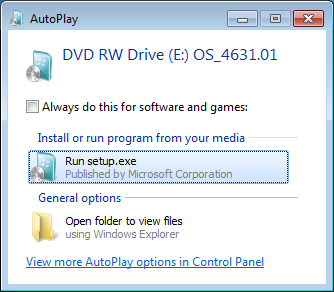
If this window doesn’t come up, start Windows Explorer and access the DVD drive
- Click Run Setup.exe (from the AutoPlay window) or double-click setup (from Windows Explorer)
- A security dialog box titled User Account Control should come up, asking you whether you will allow the installation to make changes to the computer. Read the text and click Yes.
A window will come up, asking you to select the language the computer will use (this installation uses Microsoft Windows 7 Ultimate)
- Click the desired language. Another window will come up to confirm the language you selected:

- Click Next. Another window comes up to indicate that the installation is ready to start:

- Click Install Now. The next dialog box would ask you to check the updates
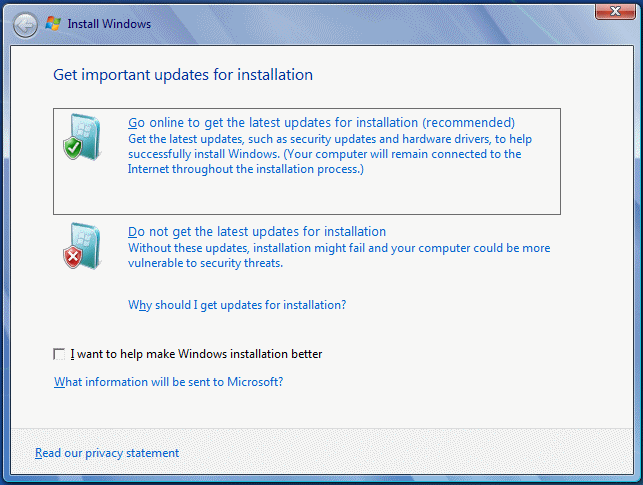
- Click the option to check updates.
The next dialog box allows you to select the type of platform you want to use 32 bits or 64 bits:
- Make your selection and click Next.
The next dialog box presents the license agreement:
- Read it and, if you agree, click the bottom check box. Otherwise, stop the installation
- If you agreed with the license, click Next.
The next dialog box deals with existing files, if any:
- Two options are presented to you:After selecting (or creating and selecting) the partition, click Next.
- If you are installing Microsoft Windows 7 Professions, if you have files in the computer and you want to keep them, click Upgrade. If you don’t care about existing files, click the second option
- If you are installing Microsoft Windows 7 Ultimate or Enterprise, you cannot upgrade from Microsoft Windows 7 Home Premium. Therefore, you must click the second option
The next option asks you to specify the partion where you will install the operating system (OS)

-
If you had selected the option to install a new copy of the OS and if there are files already on the partition, a warning message box will inform you that the files will be moved to a folder named Windows.old. In this case, click OK.
The installation will start copying files: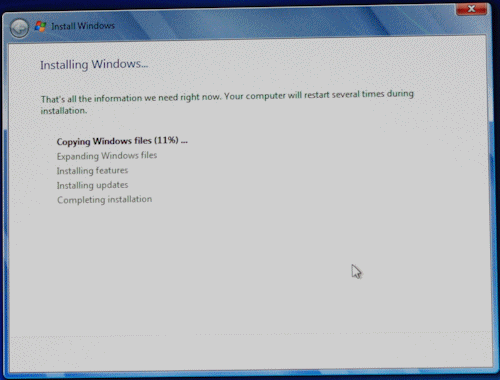
This may take a while
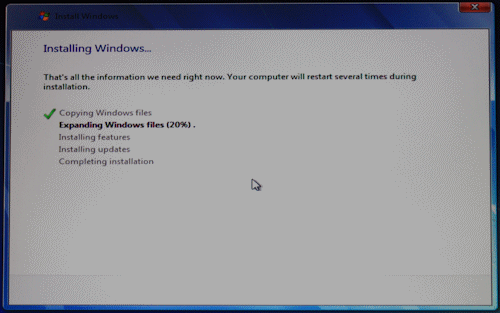
The computer will reboot
- When the files have been copied and the computer reboots, it will ask that you type a user name and a name for the computer.
Type a user name, press Tab, and type a name for the computer
- Click Next
- The next screen asks you to provide a password for the user name you just entered. This is not required, especially if you are creating a small network (I personnally leave it empty).
After typing or not typing a password, click Next
- The next screen may ask you to type a product key. After typing it, click Next
- The next screen asks you to protect your computer. In most cases, you should click Use Recommended Settings
- The next screen asks you to specify the Time Zone and the current time (and date) on the computer.
After making the selections, click Next.
You should then receive a Welcome message and other messages, then the desktop appears
| Server Operating System Installation |
| |
A client server network is a system where a computer named a server is used to provide resources to other computers named clients. A server is a computer that can participate in a client/server network to hold resources and items that other computers would need:

A server is primarily a regular computer. To create a client/server network, first identify the computer that you will use as the server. You can use an existing computer or purchase a new one. When planning the server, if you plan to use one of your (existing) computers as the server, check its hardware and make sure it meets the necessary hardware requirements.
If you have a computer with no operating system because either you got/built it (“barebone”) without an operating system or you bought a server that came without an operating system (or you removed the operating system for example by formatting the hard drive or you created two or more partitions on the hard drive)), make sure it meets the necessary hardware requirements.
You will also need a monitor attached to the server. If you will not work closely with the server, that is, if you will not “watch” the server all day long, the type of monitor you connect to it may not be important. A monitor that can handle a 1024 x 768 resolution will be fine.
As its name implies, the role of a server is to serve. To perform this job, it must be loaded with a special operating system (OS), such as Microsoft Windows Server 2008. That’s the one we will use.
If you already have a computer that has an operating system whose version is lower than the one you want to use (Microsoft Windows Server 2008), you may have to upgrade it. Otherwise, you may have to get the OS and install it. You may have a computer with an operating system but that OS cannot be upgraded into Microsoft Windows Server 2008.
To get an operating system, you have many options:
- You can purchase a computer that has the operating system already. In this case, if you order the computer from a web store, you must indicate that you want it to have the OS already, which would be installed by the manufacturer
- You can acquire and install the OS. You can purchase the OS from the operating system publisher (either buy the OS from Microsoft or purchase an MSDN Subscription), from a software dealer, or a web store
To install Microsoft Windows Server 2008:
- Start the computer. You may receive a message stating that the operating system is missing or something like that
- Open the DVD drive
- Put the disc in the drive, and close it
- Restart the computer. You should receive a message stating Press Any Key To Boot From CD or DVD
- Press any key to start the installation.
(If your computer already has an operating system, start it. Open the DVD drive, put the DVD in it, and close its door. If the operating system cannot be upgraded, a message box and display and let you know)
- At one time, a window will come up, asking you to select the language. Click the desired language, such as My Language is English
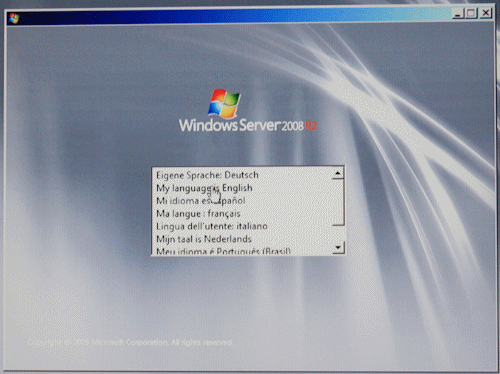
- The next screen will display details of the selected language:

Click Next
- Click Install Now
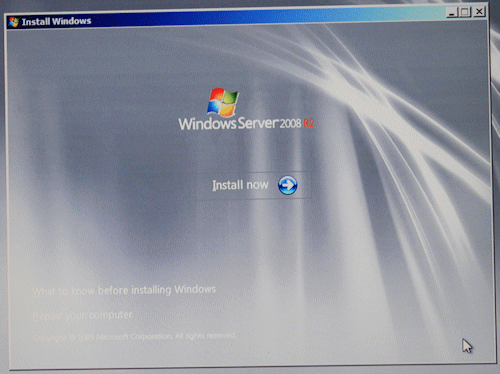
- The next screen will ask what version of the operating system you want to install. For our example, we click Windows Server 2008 R2 Server Enterprise with Service Pack 1
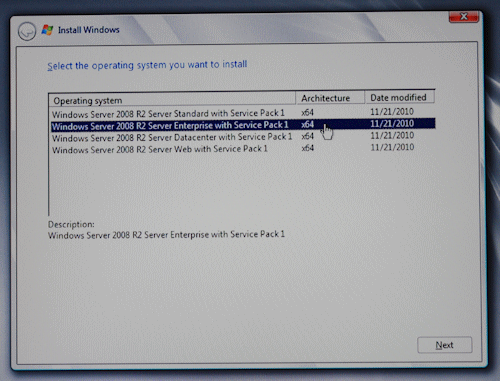
- To continue, click Next
- The next screen will show the Microsoft Software License Terms. Read it. Since it is long, to navigate up and down, you can press Page Up or Page Down. After reading it, if you accept the terms of the license, click I Accept The License Terms

- Click Next.
If you don’t like what it says, press ESC and stop the installation.
- The next screen asks you to upgrade or perform a new installation. For our example, we will perform a new installation

- The next screen asks you to select the partition you want to use to install the operating system. In most cases, you should create partitions. For example, if you have only one partition but it is large and you want to create various partitions, click it to select it. Then, click New. A spin button will diplay, allowing you to decrease or manage the size(s) of the partition(s). When you reach the desired size, click Apply. You can also format a partition as necessary. If you do, make sure you use NTFS
- After creating the partitions, select the partition you want to use

- Click Next
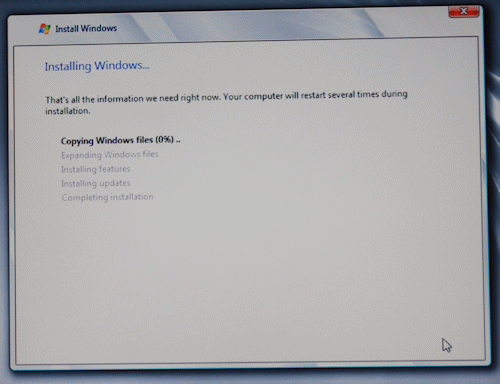
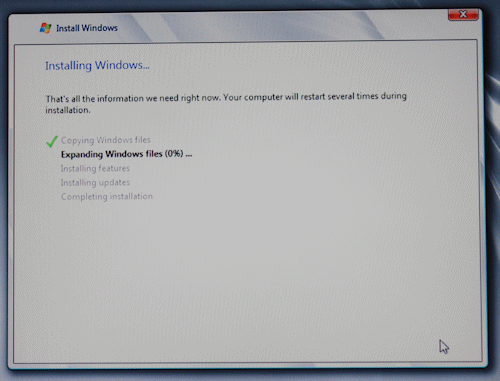
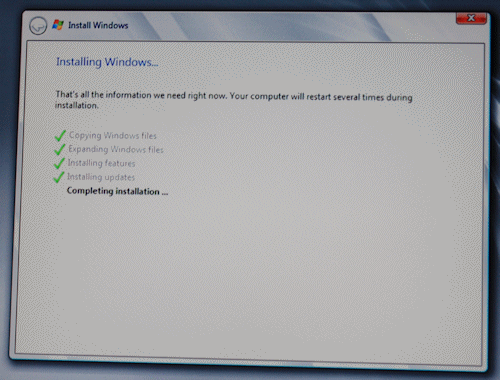
- The installation will start copying files. This may take a while.
When the installation has finished copying the files, it will reboot
- When the computer reboots, it may display a message to Press Any Key to Boot From CD or DVD. Don’t press any key.
The installation will perform new operations about Completing Installation.
When it has finished Completing Installation, the computer may reboot.
The next screen asks you to set the administrator’s password: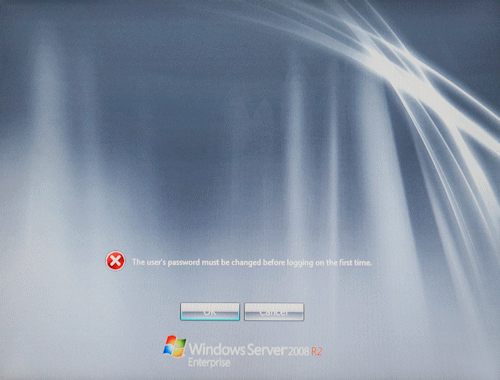
Click OK
- Type the password
- Press Tab to access the other text box and type the same password

- Click the right-pointing button or press Enter
- A message will tell you that Your Password Has Been Changed.
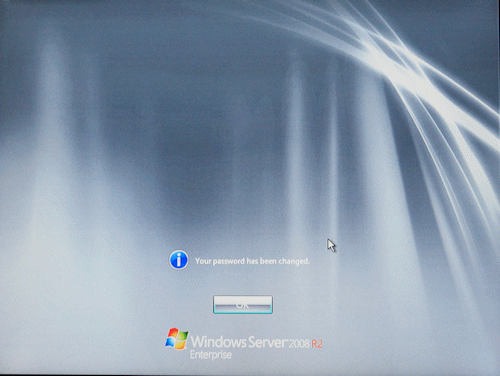
Click OK
- When asked to login, press Ctrl + ALT + DELETE
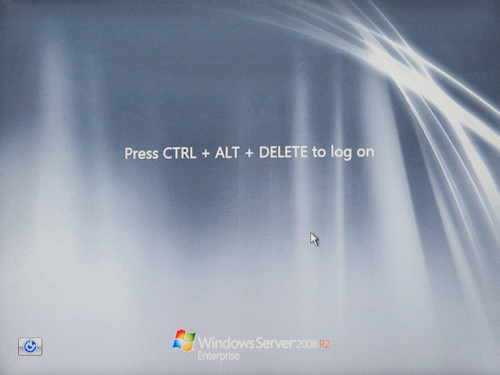
- Enter the password and press Enter
| Introduction to Server Configuration |
| |
When you have finished installing Microsoft Windows Server 2008 R2, a window titled Initial Configuration Tasks may come up:
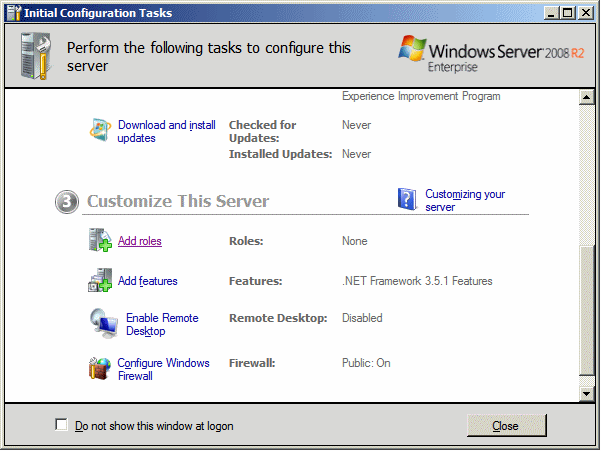
The Initial Configuration Tasks window is used to perform the most fundamental or routine operations of Microsoft Windows Server 2008 R2. This window displays when the computer starts. If you don’t want to come up like that, click the bottom check box. If it doesn’t come up when the computer starts, to restore this window, click Start -> Run, type oobe and press Enter.
After installing the operating system, there are a few things you should (must) do before continuing:
- You must make sure the computer is connected to the Internet
- If this is the first computer, you must make it a domain controller (this is not a requirement if the computer will not be a domain controller; if you don’t (yet) know what a domain controller is, don’t worry about that now)
Every computer in the network must have a name. The installation gives a default name that you can accept or change. Some installations, such as Small Business Server, prompt you to accept or specify the name of the server. After installing Microsoft Windows Server 2008, to check and/or change the name of the server:
- In the Initial Configuration Tasks window, click Provide Computer Name and Domain:
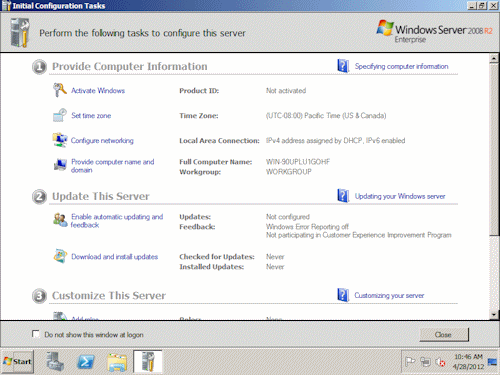
- Accept or change the name of the server
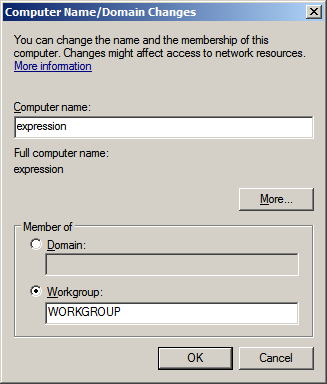
- Click OK
- A dialog box will ask you to restart your computer. Click OK
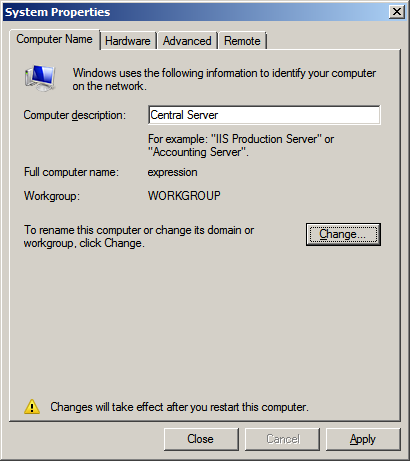
- Click Close
- Click Restart Now
Network discovery makes it possible for a computer to allow other computers to “see” it on the network. To take care of it on the server, start Windows Explorer and click Network (you can click the Start button and click the Network option). A message should appear under the toolbar stating “Network discovery is turned off…”:
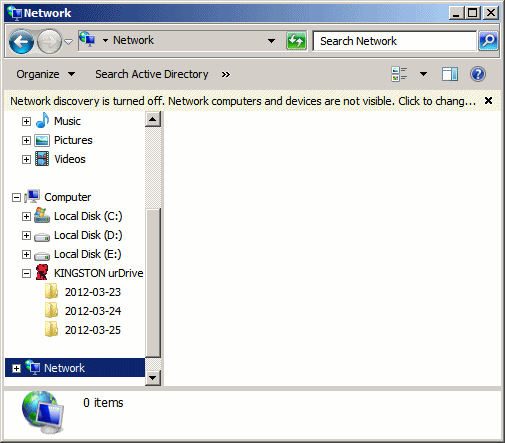
Click that message and click “Turn on network discovery and file sharing”:
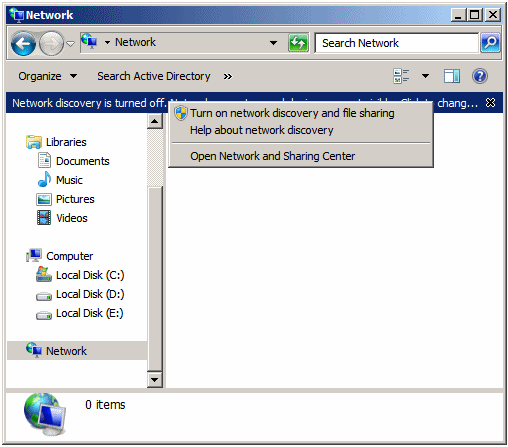
You should receive a message box presenting you two options:
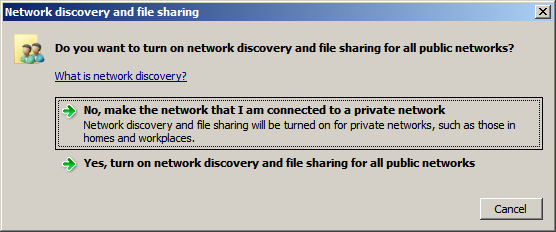
Click “Yes, turn on network discovery…”. If some computers are already installed and connected to the same router, their names may appear in the Network node in Windows Explorer.
| Connecting the Server to the Internet |
| |
Normally, when you have fiinished installing the server, if everything went alright and the computer is connected to a router, you should be connected to the Internet. To test it, you can start the browser (Internet Explorer), set the address to http://msdn.microsoft.com, and press Enter.
You should make sure your installation of the operating system can regularly get its updates from Microsoft. To take care of this, click Start -> All Programs -> Windows Update. A windows will display, asking you to enable automatic updates.
Every computer on the network needs an IP address so that other computers of the network can locate it, just like every house needs a physical address so that the post office and other people can find it.
A computer has two main ways of getting an IP address:
- A server, called DHCP server (the word “server” here represents an application; it doesn’t have to be a different server than the one you installed), can automatically assign (provide) an IP address to each computer. This solution is sometimes said to pose security problems
- You can manually assign an IP address to each computer. Of course, you need to know a little bit about something named TCP/IP, which means you would need to know how to create and assign IP addresses
To assign an IP address to a computer that runs Microsoft Windows 7, click Start -> Computer (or click Control Panel). On the left, right-click Network and click Properties. If you are using a laptop, click Wireless Network Connection. If you are using a desktop, click Local Area Connection.
To assign an IP address to a server (that runs Microsoft Windows Server 2008 R2):
- In the Initial Configuration Tasks, click Configure Networking
- On the Taskbar, click Start and click Network. In the left frame, right-click Network and click Properties. Click Local Area Connection. In the Local Area Connection Status dialog box, click Properties
The following section is optional, especially if you are working on a small network. To create the IP address for the server:
- Click Start
- Right-click Network and click Properties

- Click Local Area Connection
- Click Details. Make note (on a piece of paper) of the address on the right side of IPv4 Address:
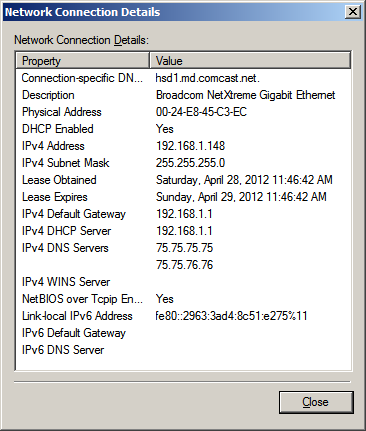
(For our example, we are building a small network and we will just use a small range of IP addresses. In the real world or for a large network, you would need to actually know TCP/IP, design a range of IP addresses you plan to use, then assign those IP addresses, or design a way to assign the IP addresses to the computers)
- Click Close
- In the Local Area Connection Status dialog box, click Properties
- In the checked list box, click Internet Protocol Version 4 (TCP/IPv4)
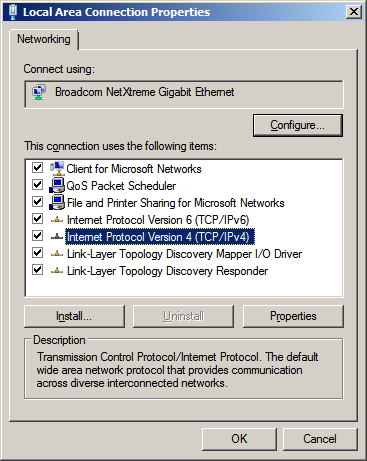
- Click Properties
- Click Use the Following IP Address
- Type the IP address you want the server to use (for our example, and based on the above dialog box, we type 192.168.001.102) and press Tab
- Type the subnet mask (normally, it should be added automatically when you press Tab from the previous IP address text box)
- Type the default gateway address (use the first and the second octets of the IP address you had provided (such as 192.168) and use 001.001 for the other two bytes)
- Provide the Preferred DNS server address (we use 127.0.0.1 for our example) and the Alternate DNS Server address (we leave ours empty)

- Click OK
- Click Close
- Click Close
| Creating a Domain Controller |
| |
If you are creating a new network, one of your computers should (must) be able to manage access to the computers and resources that belong to the network. That is, a central computer, named a server, must be able to allow or deny access (this is called authentication) of the network and its resources to people. That central computer, that server, is named a domain controller. The first server you install usually should (must) be made a domain controller. |
|













































